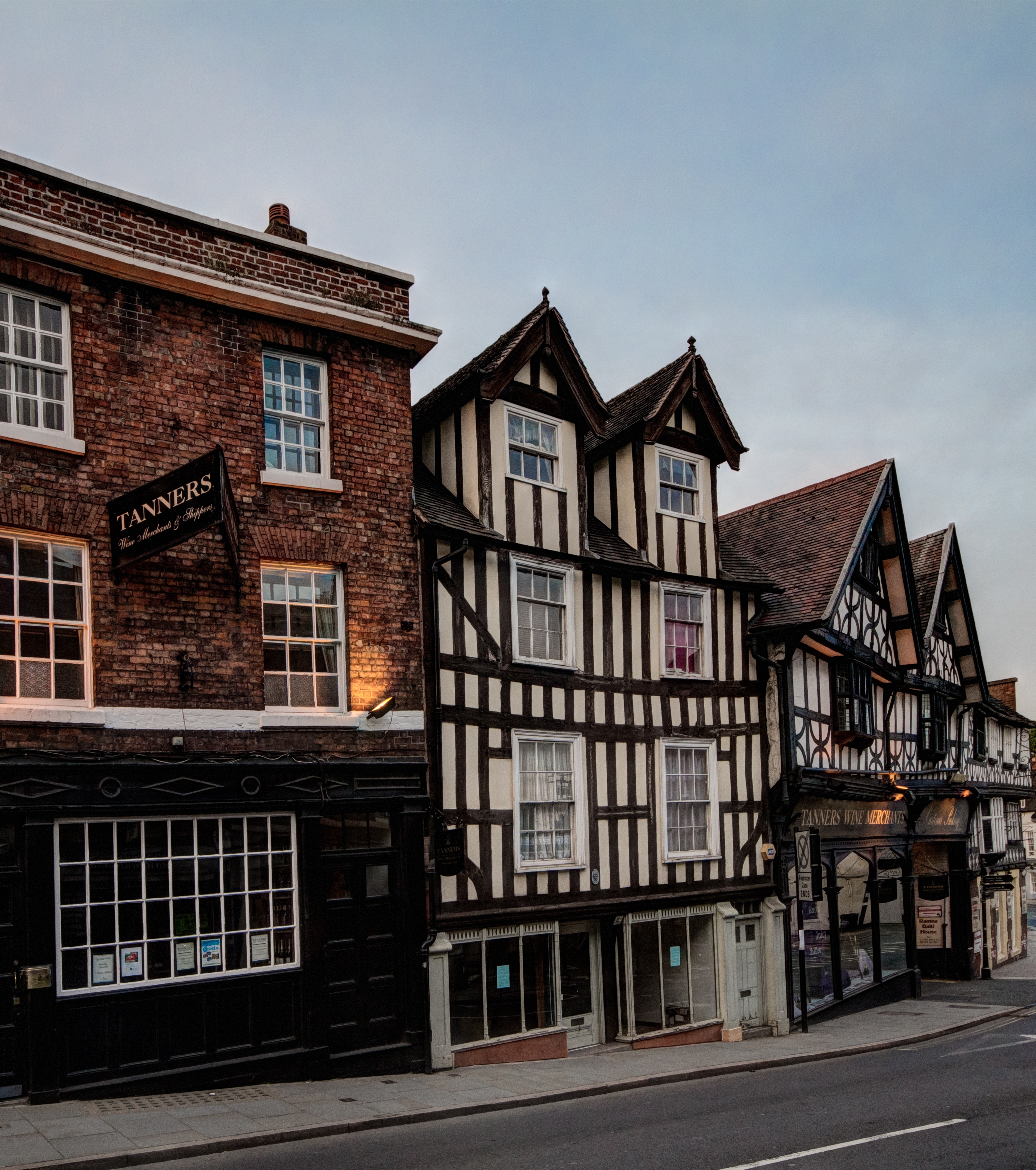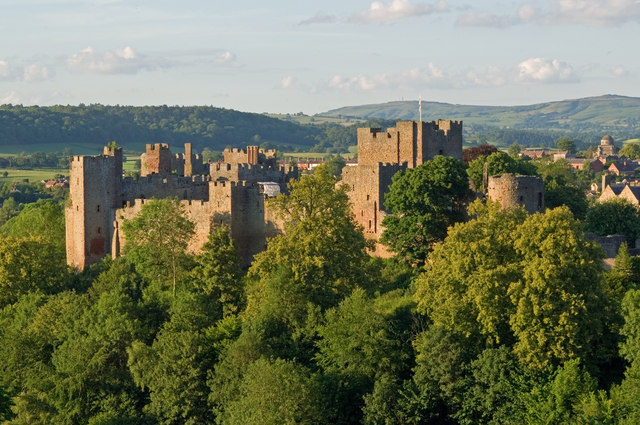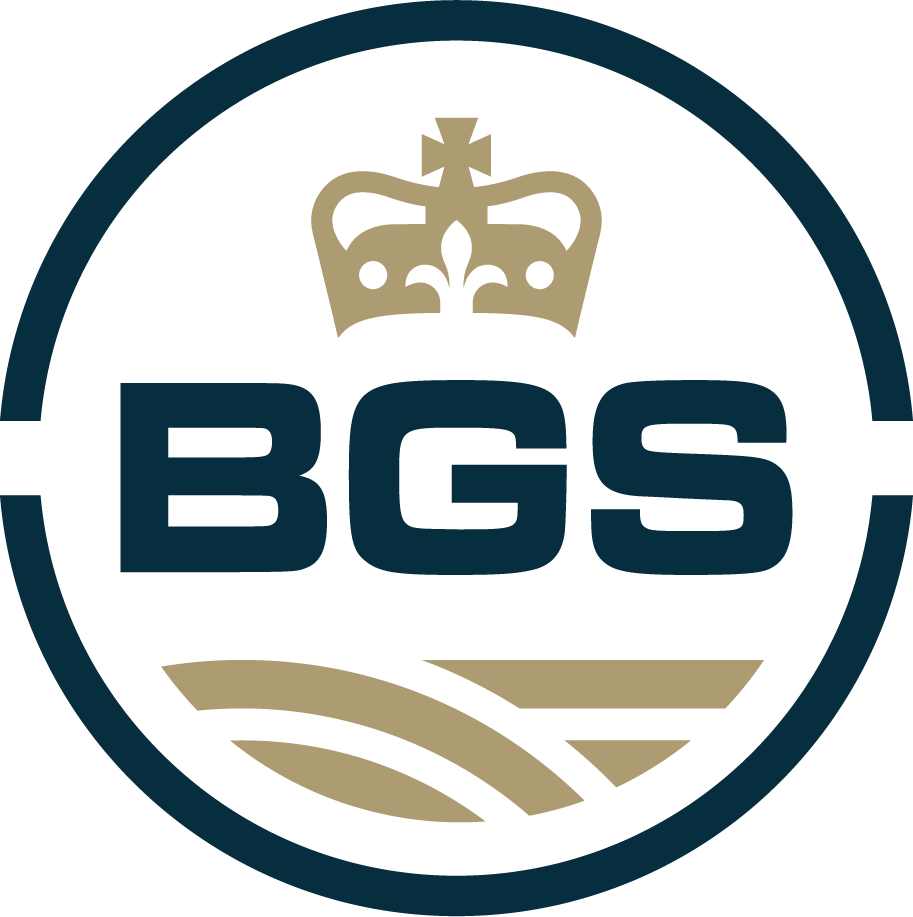|
1990 Bishop's Castle Earthquake
The 1990 Bishop's Castle earthquake occurred near the town of Bishop's Castle, Shropshire, England on 2 April. Location, date and time On 2 April 1990, a powerful earth tremor was felt across much of England and Wales at 13:46 34.2s GMT. Early news reports in the immediate aftermath speculatively attributed the epicentre to places as far apart as Nottingham and a valley in the east of Wales and then settled on Wrexham, before geologists finally concluded that it had in fact been in the vicinity of the small town of Clun near the town of Bishop's Castle, Shropshire. Cause Bishops Castle lies atop an ancient geological fault line – the Pontesford-Linley fault. A sudden movement in the fault sent shock waves through the rock. The local rocks are predominantly Jurassic Middle Lias. Magnitude The magnitude of the earthquake was originally measured as being between 4.9 and 5.4 on the Richter scale. Its final estimated magnitude was 5.1, which meant that it was the stronges ... [...More Info...] [...Related Items...] OR: [Wikipedia] [Google] [Baidu] |
Richter Magnitude Scale
The Richter scale —also called the Richter magnitude scale, Richter's magnitude scale, and the Gutenberg–Richter scale—is a measure of the strength of earthquakes, developed by Charles Francis Richter and presented in his landmark 1935 paper, where he called it the "magnitude scale". This was later revised and renamed the local magnitude scale, denoted as ML or . Because of various shortcomings of the original scale, most seismological authorities now use other similar scales such as the moment magnitude scale () to report earthquake magnitudes, but much of the news media still erroneously refers to these as "Richter" magnitudes. All magnitude scales retain the logarithmic character of the original and are scaled to have roughly comparable numeric values (typically in the middle of the scale). Due to the variance in earthquakes, it is essential to understand the Richter scale uses logarithms simply to make the measurements manageable (i.e., a magnitude 3 quake factors ... [...More Info...] [...Related Items...] OR: [Wikipedia] [Google] [Baidu] |
Shrewsbury
Shrewsbury ( , also ) is a market town, civil parish, and the county town of Shropshire, England, on the River Severn, north-west of London; at the 2021 census, it had a population of 76,782. The town's name can be pronounced as either 'Shrowsbury' or 'Shroosbury', the correct pronunciation being a matter of longstanding debate. The town centre has a largely unspoilt medieval street plan and over 660 listed buildings, including several examples of timber framing from the 15th and 16th centuries. Shrewsbury Castle, a red sandstone fortification, and Shrewsbury Abbey, a former Benedictine monastery, were founded in 1074 and 1083 respectively by the Norman Earl of Shrewsbury, Roger de Montgomery. The town is the birthplace of Charles Darwin and is where he spent 27 years of his life. east of the Welsh border, Shrewsbury serves as the commercial centre for Shropshire and mid-Wales, with a retail output of over £299 million per year and light industry and distributi ... [...More Info...] [...Related Items...] OR: [Wikipedia] [Google] [Baidu] |
History Of Shropshire
Shropshire was established during the division of Saxon Mercia into shires in the 10th century. It is first mentioned in 1006. After the Norman Conquest it experienced significant development, following the granting of the principal estates of the county to eminent Normans, such as Roger De Montgomery and his son Robert de Bellême. The Coalbrookdale area of the county is designated "the birthplace of the Industrial Revolution", due to significant technological developments that happened there. Etymology The origin of the name "Shropshire" is the Old English "Scrobbesbyrigscīr" (literally ''Shrewsburyshire''), perhaps taking its name from Richard Scrob (or FitzScrob or Scrope), the builder of Richard's Castle near what is now the town of Ludlow. However, the Normans who ruled England after 1066 found both "Scrobbesbyrig" and "Scrobbesbyrigscir" difficult to pronounce so they softened them to "Salopesberia" and "Salopescira". Salop is the abbreviation of these. When a council ... [...More Info...] [...Related Items...] OR: [Wikipedia] [Google] [Baidu] |
1990 Earthquakes
This is a list of earthquakes in 1990. Only earthquakes of magnitude 6 or above are included, unless they result in damage and/or casualties, or are notable for some other reason. All dates are listed according to UTC time. By death toll By magnitude Listed are earthquakes with at least 7.0 magnitude. By month January February March April May June July August September October November December See also * * Lists of 20th-century earthquakes * Lists of earthquakes by year A ''list'' is any set of items in a row. List or lists may also refer to: People * List (surname) Organizations * List College, an undergraduate division of the Jewish Theological Seminary of America * SC Germania List, German rugby union ... References {{Earthquakes by year 1990 1990 1990 ... [...More Info...] [...Related Items...] OR: [Wikipedia] [Google] [Baidu] |
Earthquakes In The United Kingdom
An earthquake (also known as a quake, tremor or temblor) is the shaking of the surface of the Earth resulting from a sudden release of energy in the Earth's lithosphere that creates seismic waves. Earthquakes can range in intensity, from those that are so weak that they cannot be felt, to those violent enough to propel objects and people into the air, damage critical infrastructure, and wreak destruction across entire cities. The seismic activity of an area is the frequency, type, and size of earthquakes experienced over a particular time period. The seismicity at a particular location in the Earth is the average rate of seismic energy release per unit volume. The word ''tremor'' is also used for non-earthquake seismic rumbling. At the Earth's surface, earthquakes manifest themselves by shaking and displacing or disrupting the ground. When the epicenter of a large earthquake is located offshore, the seabed may be displaced sufficiently to cause a tsunami. Earthquak ... [...More Info...] [...Related Items...] OR: [Wikipedia] [Google] [Baidu] |
List Of Earthquakes In The British Isles
__NOTOC__ The following is a list of notable earthquakes that have affected the British Isles. On average, several hundred earthquakes are detected by the British Geological Survey each year, but almost all are far too faint to be felt by humans. Those that are felt generally cause very little damage. Nonetheless, earthquakes have on occasion resulted in considerable damage, most notably in 1580 and 1884; Musson (2003) reports that there have been ten documented fatalities – six caused by falling masonry and four by building collapse. The causes of earthquakes in the UK are unclear, but may include "regional compression caused by motion of the Earth’s tectonic plates, and uplift resulting from the melting of the ice sheets that covered many parts of Britain thousands of years ago." Medieval reports of "earthquakes" that threw down newly built cathedrals may simply have been catastrophic failure of overloaded masonry, particularly towers, rather than actual tectonic events. ... [...More Info...] [...Related Items...] OR: [Wikipedia] [Google] [Baidu] |
List Of Earthquakes In 1990 ...
This is a list of earthquakes in 1990. Only earthquakes of magnitude 6 or above are included, unless they result in damage and/or casualties, or are notable for some other reason. All dates are listed according to UTC time. By death toll By magnitude Listed are earthquakes with at least 7.0 magnitude. By month January February March April May June July August September October November December See also * * Lists of 20th-century earthquakes * Lists of earthquakes by year References {{Earthquakes by year 1990 1990 1990 File:1990 Events Collage.png, From left, clockwise: The 1990 FIFA World Cup is played in Italy; The Human Genome Project is launched; Voyager I takes the famous Pale Blue Dot image- speaking on the fragility of Humankind, humanity on Earth, Astroph ... [...More Info...] [...Related Items...] OR: [Wikipedia] [Google] [Baidu] |
Ludlow
Ludlow () is a market town in Shropshire, England. The town is significant in the history of the Welsh Marches and in relation to Wales. It is located south of Shrewsbury and north of Hereford, on the A49 road (Great Britain), A49 road which bypasses the town. The town is near the confluence of the rivers River Corve, Corve and River Teme, Teme. The oldest part is the medieval Defensive wall, walled town, founded in the late 11th century after the Norman Conquest, Norman conquest of England. It is centred on a small hill which lies on the eastern bank of a bend of the River Teme. Situated on this hill are Ludlow Castle and the parish church, St Laurence's Church, Ludlow, St Laurence's, the largest in the county. From there the streets slope downward to the rivers River Corve, Corve and River Teme, Teme, to the north and south respectively. The town is in a sheltered spot beneath Mortimer Forest and the Clee Hills, which are clearly visible from the town. Ludlow has nearly 500 ... [...More Info...] [...Related Items...] OR: [Wikipedia] [Google] [Baidu] |
Hereford
Hereford () is a cathedral city, civil parish and the county town of Herefordshire, England. It lies on the River Wye, approximately east of the border with Wales, south-west of Worcester and north-west of Gloucester. With a population of 53,112 in 2021 it is by far the largest settlement in Herefordshire. An early town charter from 1189, granted by Richard I of England, describes it as "Hereford in Wales". Hereford has been recognised as a city since time immemorial, with the status being reconfirmed as recently as October 2000. It is now known chiefly as a trading centre for a wider agricultural and rural area. Products from Hereford include cider, beer, leather goods, nickel alloys, poultry, chemicals and sausage rolls, as well as the famous Hereford breed of cattle. Toponymy The Herefordshire edition of Cambridge County Geographies states "a Welsh derivation of Hereford is more probable than a Saxon one" but the name "Hereford" is also said to come from the ... [...More Info...] [...Related Items...] OR: [Wikipedia] [Google] [Baidu] |
European Macroseismic Scale
The European macroseismic scale (EMS) is the basis for evaluation of seismic intensity in European countries and is also used in a number of countries outside Europe. Issued in 1998 as an update of the test version from 1992, the scale is referred to as EMS-98. Overview The history of the EMS began in 1988 when the European Seismological Commission (ESC) decided to review and update the Medvedev–Sponheuer–Karnik scale (MSK-64), which was used in its basic form in Europe for almost a quarter of a century. After more than five years of intensive research and development and a four-year testing period, the new scale was officially released. In 1996 the XXV General Assembly of the ESC in Reykjavík passed a resolution recommending the adoption of the new scale by the member countries of the European Seismological Commission. The European macroseismic scale EMS-98 is the first seismic intensity scale designed to encourage co-operation between engineers and seismologists, rather th ... [...More Info...] [...Related Items...] OR: [Wikipedia] [Google] [Baidu] |
British Geological Survey
The British Geological Survey (BGS) is a partly publicly funded body which aims to advance geoscientific knowledge of the United Kingdom landmass and its continental shelf by means of systematic surveying, monitoring and research. The BGS headquarters are in Keyworth, Nottinghamshire, England. Its other centres are located in Edinburgh, Wallingford, Cardiff and London. The current motto of the BGS is: ''Gateway to the Earth''. History and previous names The Geological Survey was founded in 1835 by the Board of Ordnance as the Ordnance Geological Survey, under Henry De la Beche. This was the world's first national geological survey. It remained a branch of the Ordnance Survey for many years. In 1965, it was merged with the Geological Museum and Overseas Geological Surveys, under the name of Institute of Geological Sciences. On 1 January 1984, the institute was renamed the British Geological Survey (and often referred to as the BGS), a name still carried today. Competenc ... [...More Info...] [...Related Items...] OR: [Wikipedia] [Google] [Baidu] |
2002 Dudley Earthquake
__NOTOC__ The following is a list of notable earthquakes that have affected the British Isles. On average, several hundred earthquakes are detected by the British Geological Survey each year, but almost all are far too faint to be felt by humans. Those that are felt generally cause very little damage. Nonetheless, earthquakes have on occasion resulted in considerable damage, most notably in 1580 and 1884; Musson (2003) reports that there have been ten documented fatalities – six caused by falling masonry and four by building collapse. The causes of earthquakes in the UK are unclear, but may include "regional compression caused by motion of the Earth’s tectonic plates, and uplift resulting from the melting of the ice sheets that covered many parts of Britain thousands of years ago." Medieval reports of "earthquakes" that threw down newly built cathedrals may simply have been catastrophic failure of overloaded masonry, particularly towers, rather than actual tectonic events. ... [...More Info...] [...Related Items...] OR: [Wikipedia] [Google] [Baidu] |





